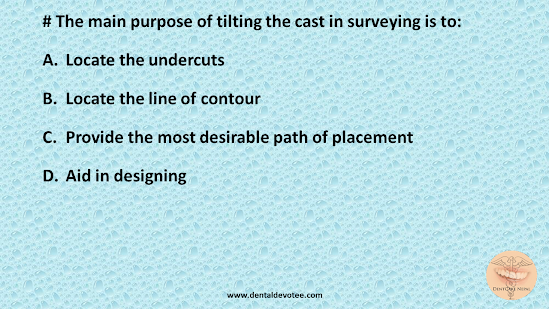# Following are the examples of indirect retainers except:
A. Occlusal rest
B. Auxillary occlusal rest
C. Canine rest
D. Continuous bar retainers and linguoplates
The correct answer is A. Occlusal rest.
Continuous clasp: “A metal bar usually resting on the lingual surface of teeth to aid in their
stabilization and to act as an indirect retainer”-GPT.
Canine rest
• If the mesial marginal ridge of the first premolar is close to the fulcrum line, canine rest is used.
• This design can be modified by placing the minor connector anterior to the canine. The minor connector hooks back into the cingular rest seat. This increases the efficacy of the indirect retainer (due to increase in distance from the fulcrum line).
Types of Indirect Retainers
The most commonly used type of indirect retainer is a rest connected to a minor connector. In some cases indirect retention is obtained without a rest.
Types:
1. Auxiliary occlusal rest
2. Canine extension from the occlusal rest
3. Canine rest
4. Continuous bar retainers and linguoplates
5. Modification areas
6. Rugae support
7. Direct indirect retention
8. Indirect retention from major connectors
Reference: Nallaswamy, 2nd Edition, Page 375







